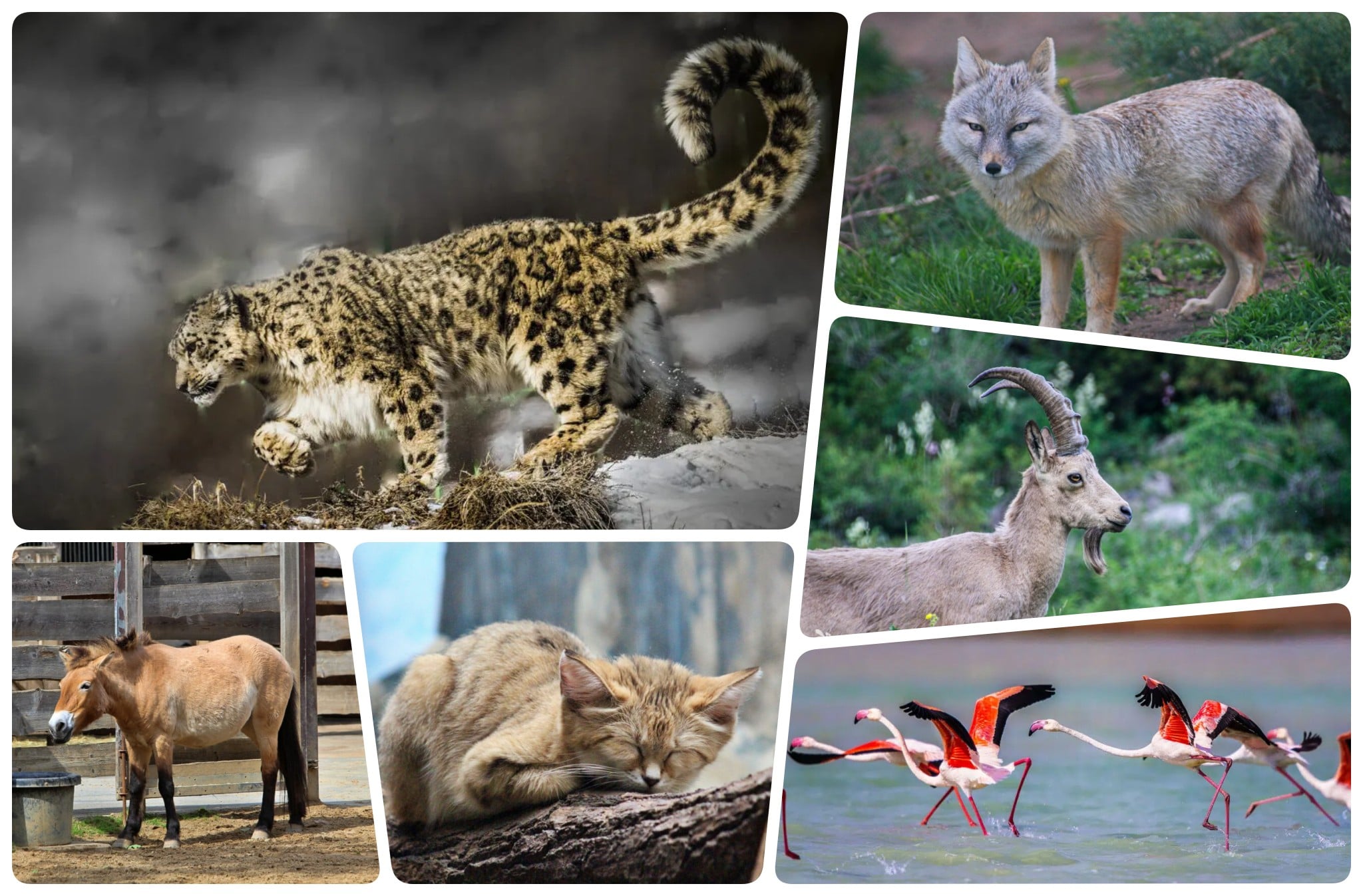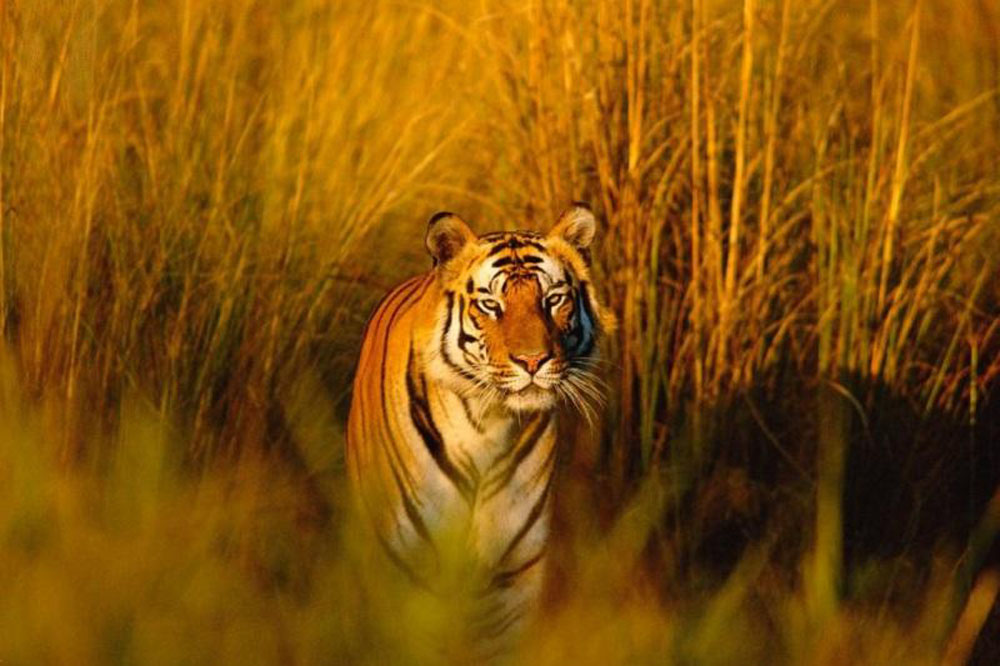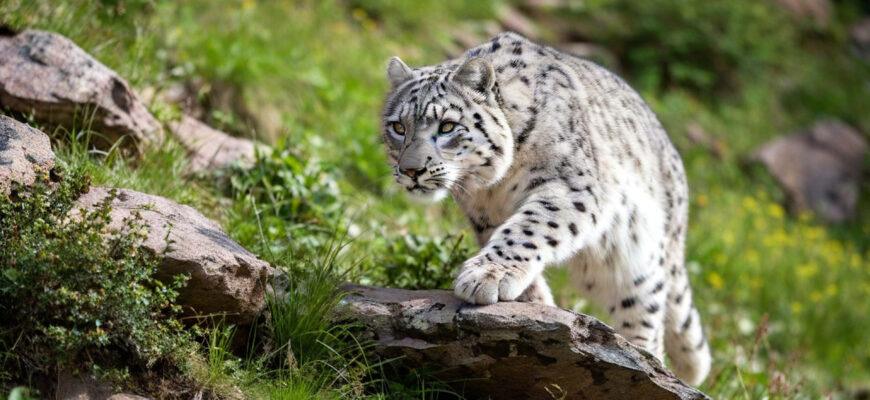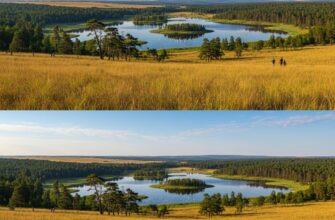Wildlife of Kazakhstan and Central Asia: A Comprehensive Guide
Kazakhstan and Central Asia harbor an extraordinary diversity of wildlife, adapted to the region’s varied landscapes from arid deserts to alpine mountains. This rich biological heritage represents an important ecological treasure requiring conservation and appreciation. Recent initiatives have revitalized several endangered species populations, demonstrating Kazakhstan’s growing commitment to biodiversity preservation while offering unique opportunities for wildlife enthusiasts and researchers alike.
Biodiversity of Kazakhstan and Central Asia
Mammal Species

Central Asia’s mammalian fauna is remarkably diverse, with 153 species distributed across various habitats from scorching deserts to the glaciers of the Pamirs and Tien Shan mountain ranges. Kazakhstan has emerged as a leader in conservation efforts, particularly for large mammals that once freely roamed the region.
Iconic Large Mammals
The snow leopard, one of Kazakhstan’s most emblematic species, has seen significant population growth in recent decades. Thanks to systematic conservation measures, snow leopard numbers have increased from a critically low 80-100 individuals in the 1990s to approximately 160-180 individuals today. About 70% of the snow leopard’s habitat in Kazakhstan is now protected within nature reserves, and scientists use advanced monitoring techniques including camera traps and satellite telemetry to track these elusive cats.
Kazakhstan’s steppes once supported wildlife diversity comparable to Africa’s grasslands, though many species declined due to hunting and habitat loss. Currently, ambitious rewilding programs are restoring populations of several iconic species:
- Przewalski’s Horse (Equus przewalski): In 2025, Hungary’s Agriculture Minister announced the country would dispatch 150 horses to Kazakhstan to bolster genetic diversity and protect against disease outbreaks. This represents approximately half of Hungary’s Przewalski’s horse population from Hortobágy.

- Turanian Tiger: Once thought extinct in Central Asia, tiger reintroduction efforts are underway with two captive tigers brought from the Netherlands currently being maintained in enclosures, with plans for their offspring to be released into the wild.

- Kulan (Equus hemionus): This wild ass species is being actively restored throughout Central Asia.

Other notable mammals include the Siberian ibex in the mountains, desert eared hedgehog in arid regions, brown bear, lynx, wolf, and fox.
Endangered Mammals
The critically endangered wild Bactrian camel (Camelus ferus) represents one of the region’s most threatened large mammals. Additionally, the jungle cat has been recently added to Kazakhstan’s Red Book, with its presence in the country confirmed only by historical records.
Bird Species
Central Asia provides habitat for approximately 300 bird species, constituting more than half of the region’s vertebrate diversity. Birds primarily nest in river deltas and along lake shores throughout the region.
The golden eagle, despite being an iconic symbol for Central Asian nations, has been categorized as a “Rare Bird with decreasing numbers” since the mid-1980s. Recent additions to Kazakhstan’s endangered species list include the griffon vulture, whose population in the Karatau Mountains has decreased by 95% over just 12 years, and the black vulture, which numbered about 250 pairs in 2002 but has nearly disappeared from the region.
Other notable bird species include:
- Steppe eagle

- Black stork
![]()
- Snowcocks (characteristic mountain birds)

- Various waterfowl species in wetland areas
Reptiles and Amphibians
Central Asia’s deserts and semi-arid territories support 79 reptile species, which have adapted to extreme temperature fluctuations. The region hosts five amphibian species, three of which are rare: the little-studied Pevtsov’s toad, the Central Asian frog, and Ranodon sibiricus.
Fish and Aquatic Life
Over 100 different fish species inhabit Central Asian water bodies. The lakes of Burabay National Park, for instance, are famous for sport fishing, with prominent species including zander and pike.
Kazakhstan’s Ecosystems and Wildlife Habitats
Mountain Ecosystems
The mountains of Central Asia belong to the great Central Asian uplift, with fauna distinctly different from adjacent desert regions. Mountain species rarely descend to lower elevations, creating unique ecological communities. Characteristic mountain fauna includes pikas, forest dormouse, forest mice, various goat species, white marten, brown bear, lynx, and snowcocks.
The Pamirs, Hissar-Alai, and Tien Shan mountain systems represent the western outpost of Inner Asia’s mountain fauna, characterized by distinctive species including the leopard, kiik-argali, and dark-bellied snowcock.
Steppe and Prairie Ecosystems
The Central Asian steppe was historically comparable to Africa’s grasslands in terms of large herbivore diversity. Though now significantly depleted, these vast grasslands remain important habitat for remaining populations of saiga antelope, Mongolian gazelle, goitered gazelle, and various rodent species including the Mongolian gerbil, little souslik, and bobak marmot.
The steppe ecosystems have enormous potential for rewilding efforts, with scientists identifying numerous species suitable for reintroduction including wild Bactrian camel, Przewalski’s horse, kulan, European bison, wild yak, red deer, goitered gazelle, and Mongolian gazelle.
Desert and Semi-Desert Ecosystems
Desert regions host unique wildlife adapted to extreme conditions. The Altyn-Emel National Park, for instance, encompasses sand dunes with saxaul and turanga vegetation that provide habitat for desert-adapted species.
National Parks and Protected Areas
Burabay National Park
Often referred to as the “Kazakh Switzerland,” Burabay National Park in northern Kazakhstan was established in 2000. The park features stunning landscapes including pine forests, imposing rock formations, and serene lakes. Home to nearly 800 plant species and diverse wildlife, Burabay offers various recreational activities in a tranquil setting away from urban areas.
The park’s lakes are deep with fresh or slightly salty waters and steep shores, surrounded by pine forests. The largest and most popular is Lake Borovoye (Lake Burabay), considered the jewel of the region. Lake Shchuchye, famous for its pike, is the deepest lake reaching 23 meters.
According to local legend, a proud white camel named Bura once lived in the surrounding forests, protecting locals by warning them of dangers. After being wounded by a hunter, Bura transformed into a mountain before dying, giving the park its name. One of the peaks still resembles a camel’s silhouette.
Altyn-Emel National Park
The fauna of Altyn-Emel National Park includes 70 mammal species, approximately 300 bird species, 25 reptile species, 5 amphibian species, and 28 fish species. The park encompasses diverse biotopes representative of Kazakhstan’s territory, including sand dunes with saxaul and turanga vegetation, steppe areas, mountain forests, alpine meadows, and river floodplains with reed beds.
As a UNESCO Biosphere Reserve, Altyn-Emel focuses on reproducing and conserving animal diversity. The park staff takes particular pride in reviving populations of kulans and gazelles, which are now under protection and care. Recently, a snow leopard was captured on camera in the park, indicating successful conservation efforts.
Conservation Efforts and Challenges
Kazakhstan’s Red Book
Kazakhstan’s Red Book currently lists 227 species as rare and endangered, though based on recent scientific research, officials have proposed reducing this to 217 species, reflecting positive changes in certain species’ populations.
The country has made notable strides in boosting populations of several endangered animal species in recent decades. Conservation successes include:
- 21 animal species removed from the Red Book as their populations stabilized, including 19 invertebrates and two vertebrates
- Significant growth in snow leopard populations
- Active restoration of Przewalski’s horse and Turanian tiger populations
However, 11 new species have been added to the endangered list, including three insects, two birds, and one mammal, indicating ongoing conservation challenges.
Wildlife Monitoring and Research
Scientists are employing advanced technologies to monitor and study endangered animals, including camera traps and satellite telemetry. So far, 11 snow leopards have been fitted with satellite collars, enabling better tracking of their migrations and behavior patterns.
Recent archaeological and molecular evidence has provided insights into Central Asia’s historical wildlife, including research on ancient domestic animals. Studies of archaeological sites have revealed that chickens were widely raised across southern Central Asia from the fourth century BC through medieval periods, likely dispersing along the ancient Silk Road.
Threats to Central Asian Wildlife
Despite the region’s rich biodiversity, significant challenges threaten Central Asian wildlife. Over the past half-century, human activities in mountains, deserts, and river valleys have led to the disappearance of several species including the Turanian tiger, the Maral, and the Red wolf.
Other species on the verge of extinction include the Persian leopard, the Bustard, the Striped hyena, and the Screwhorn goat (Marchur). These animals face threats from hunting (for fur or horns), persecution as pests, and habitat loss due to human economic activities.
Conclusion
Kazakhstan and Central Asia represent a region of extraordinary biological diversity, from the snow leopards patrolling high mountain ridges to the kulans racing across vast steppes. Recent conservation initiatives demonstrate promising progress, with successful rewilding programs restoring populations of iconic species like the Przewalski’s horse and ongoing efforts to reintroduce tigers to their former range.
The region’s national parks, including Burabay and Altyn-Emel, not only protect crucial wildlife habitat but also offer visitors opportunities to experience Kazakhstan’s natural heritage. Wildlife tourism, when conducted responsibly, can support conservation efforts while raising awareness about the importance of preserving Central Asia’s unique fauna.
Despite significant progress, challenges remain. Climate change, habitat fragmentation, poaching, and human-wildlife conflict continue to threaten many species. The addition of new species to Kazakhstan’s Red Book underscores the ongoing need for vigilance and expanded conservation efforts.
Through continued research, monitoring, public education, and international cooperation, Kazakhstan has the opportunity to build on its conservation successes and ensure that its rich wildlife heritage thrives for generations to come.









